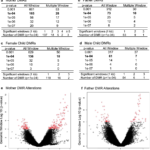2024-12-04 ハーバード大学
<関連情報>
- https://seas.harvard.edu/news/2024/12/tapeworm-inspired-tissue-anchoring-mechanism-medical-devices
- https://academic.oup.com/pnasnexus/article/3/12/pgae495/7913318
寄生虫にヒントを得た、ミリメートルスケールの組織固定機構の設計と製作 Design and fabrication of a parasite-inspired, millimeter-scale tissue anchoring mechanism
Gabriel Maquignaz, Rachel Zoll, Michael Karpelson, James C Weaver, Robert J Wood
PNAS Nexus Published:03 December 2024
DOI:https://doi.org/10.1093/pnasnexus/pgae495

Abstract
Optimizing mechanical adhesion to specific human tissue types is a field of research that has gained increasing attention over the past two decades due to its utility for diagnostics, therapeutics, and surgical device design. This is especially relevent for medical devices, which could benefit from the presence of attachment mechanisms in order to better target-specific regions of the gastrointestinal (GI) tract or other soft tissues for sensing, sample collection, and drug release. In this work, and inspired by the tissue anchoring adaptations found in diverse parasitic taxa, we present a design and manufacturing platform for the production of a nonintuitive bioinspired millimeter-scale articulated attachment mechanism using laminate fabrication techniques. The functional design closely mimics the geometry and motions of curved hooks employed by some species of tapeworms to attach to their host’s intestinal walls. Here, we show the feasibility of such a mechanism both in terms of attachment capabilities and manufacturability. Successful attachment of a prototype to tissue-simulating synthetic medical hydrogels is demonstrated with an adhesion force limited only by the ultimate strength of the tissue. These results demonstrate the efficacy of parasite-inspired deployable designs as an alternative to, or complement to, existing tissue attachment mechanisms. We also describe the design and manufacturing process workflow and provide insights for scaling the design for mass-production.


